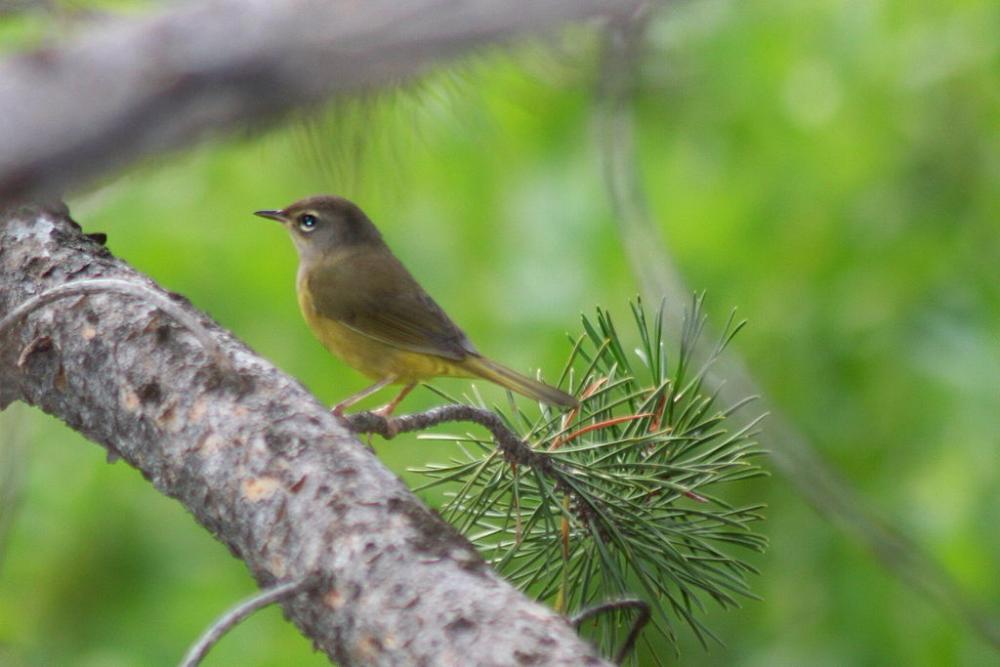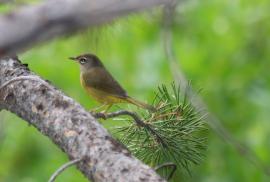Guide to Boreal Birds
Overview
MacGillivray's is a common western warbler. Two similarly hooded warblers occur east of the Rockies, the Connecticut Warbler (Oporornis agilis) and the Mourning Warbler (Oporornis philadelphia). No doubt these all originated from a common "hooded warbler" forebear during the vicissitudes of the past Ice Age, when during warm interglacial periods the forests expanded, only to be split again when the cold grip of the glaciers returned.
Description
4 3/4-5 1/2" (12-14 cm). Slate gray hood extending to upper breast, where it darkens to black. Olive green above, yellow below; female slightly paler. Both sexes have broken white eye ring. In fall, hood lighter, broken eye ring less distinct.
Voice
Song a chanting tree tree tree tree sweet sweet! Call a loud tik, sharper than the calls of most other western warblers.
Nesting
3-5 white eggs, with brown spotting, in a grassy cup nest close to the ground in a bush or tall weeds.
Habitat
Coniferous forest edges, burns, brushy cuts, or second-growth alder thickets and streamside growth.
Range/Migration
This species is found in a variety of habitats during winter, but is most numerous in mountainous situations that resemble its breeding areas in the Pacific states. The highest winter population densities occur in the Mexican cloud forests. Because of the elusive and shy nature of this species, its migration is poorly known. MacGillivray's Warblers that migrate along the Pacific coast move northward quite rapidly, while populations in the Rockies tend to migrate via lowlands and disperse to higher elevations along the way.
Breeds from Alaska and Yukon south to California and central New Mexico. Winters in tropics.



